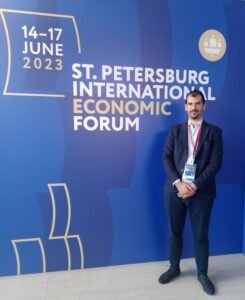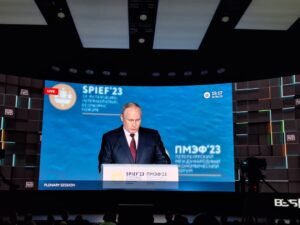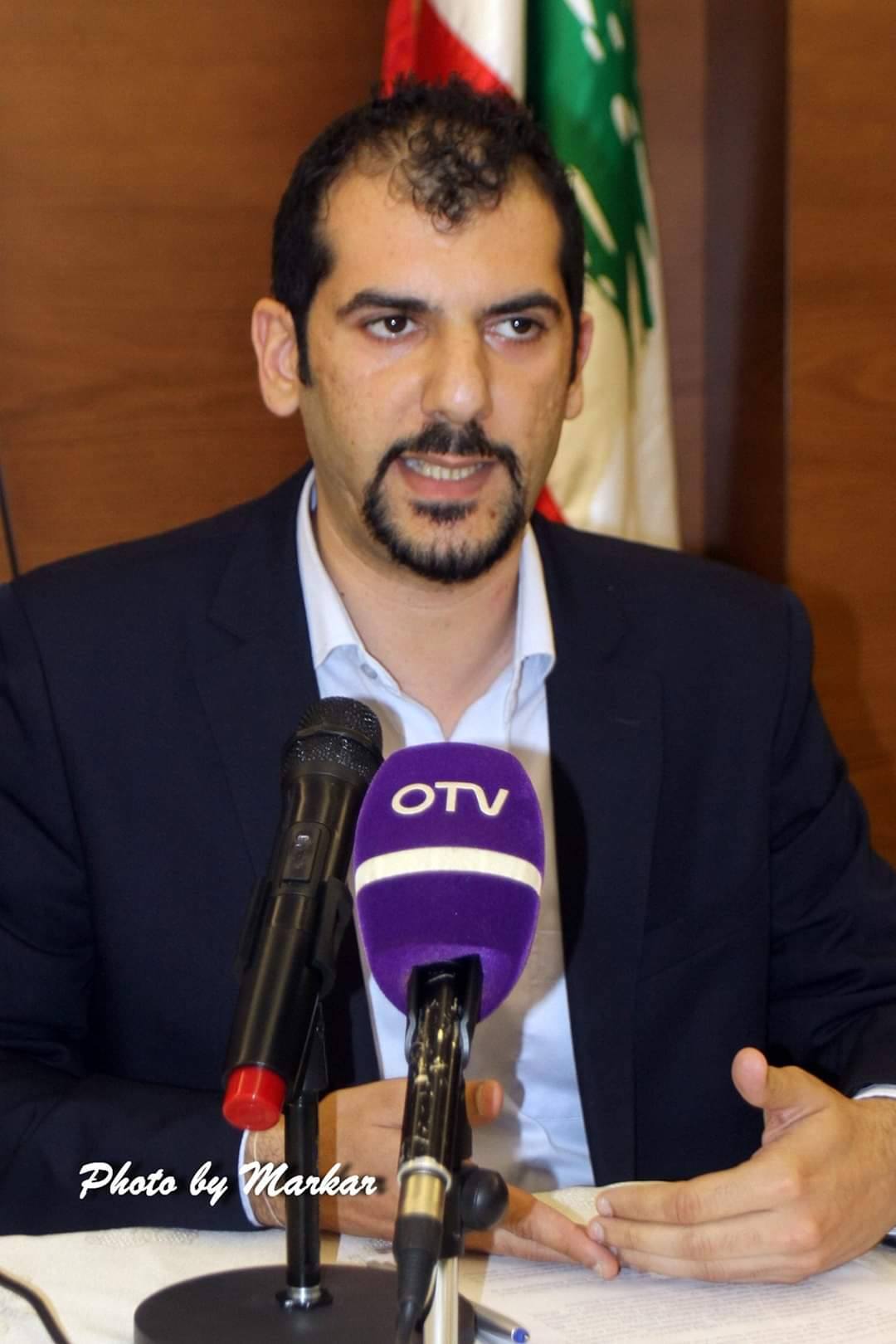 From June 14-17, 2023, I had the opportunity to participate in a program organized by the “Friends for Leadership” at the Saint Petersburg International Economic Forum. Thousands of delegates, primarily from Latin America, Africa and Asia, attended the forum alongside heads of state, diplomats and businessmen. The main objective of the forum was to network, witness the latest tech, agricultural, IT and infrastructural innovations, and attend different panels addressing Russia and its relations with the Global South. Notably, the United Arab Emirates (UAE) had “special guest” status, and its cultural, economic and political presence was felt by all in the forum. Many delegates were anxious for details of the new agreements signed between Russia and other countries, listen to Russian President Vladimir Putin’s speech, and attend dozens of sessions and panels related to BRICS (Brazil-Russia-India-China-South Africa), the Eurasian Economic Union (EAEU), the International North-South Transport Corridor (INSTC) and north-south trade. During the forum, I had the opportunity to closely identify Russia’s post-Ukraine war foreign policy priorities, meet Russia’s foreign policy spokesperson Maria Zakharova and other officials, highlight Moscow’s geo-economic interests in the Middle East, Africa and the Caucasus, and finally, assess the challenges of the emerging multipolar world system.
From June 14-17, 2023, I had the opportunity to participate in a program organized by the “Friends for Leadership” at the Saint Petersburg International Economic Forum. Thousands of delegates, primarily from Latin America, Africa and Asia, attended the forum alongside heads of state, diplomats and businessmen. The main objective of the forum was to network, witness the latest tech, agricultural, IT and infrastructural innovations, and attend different panels addressing Russia and its relations with the Global South. Notably, the United Arab Emirates (UAE) had “special guest” status, and its cultural, economic and political presence was felt by all in the forum. Many delegates were anxious for details of the new agreements signed between Russia and other countries, listen to Russian President Vladimir Putin’s speech, and attend dozens of sessions and panels related to BRICS (Brazil-Russia-India-China-South Africa), the Eurasian Economic Union (EAEU), the International North-South Transport Corridor (INSTC) and north-south trade. During the forum, I had the opportunity to closely identify Russia’s post-Ukraine war foreign policy priorities, meet Russia’s foreign policy spokesperson Maria Zakharova and other officials, highlight Moscow’s geo-economic interests in the Middle East, Africa and the Caucasus, and finally, assess the challenges of the emerging multipolar world system.
Multipolarity, de-dollarization and the future of BRICS
There were many panels and bilateral talks dedicated to the multipolar world system and its challenges, the de-dollarization process, and the coalition of BRICS. Most panelists agreed that we are moving towards a multipolar world order where no single hegemon dictates its terms; however, there were some differences of opinion when it came to the structure of this system among different players.

BRICS is becoming a rising de-dollarization coalition, with the group developing multiple de-dollarization initiatives to reduce currency risks and bypass U.S. sanctions. However, it is far from reality, at least for now, to argue that the group will initiate a common currency replacing the U.S. dollar. During the panel debates, many opposing ideas were presented from different representatives of member states. All member states aimed for de-dollarization, but none are in favor of a common currency to replace it, even though they aim to establish a “polycentric global monetary system by promoting the internationalization of the currencies of member states.” Further evidence of booming trade in de-dollarization is the progressive gains in market share of BRICS countries’ national currencies in the U.S. dollar-based global currency system. In his keynote speech at the economic forum, President Putin commented on de-dollarization, arguing, “We have never had, and do not have, the goal of de-dollarization of the Russian economy. And we have never had, and do not have, the goal of influencing the de-dollarization of the world economy. The influence of one or another currency on the world economy is connected with the economic potential of the country that is the issuer of that currency.”
There were also divergent opinions between China and India. While the Chinese speakers appeared “calm,” the Indian speakers seemed “defensive,” raising concerns about the trade deficit with Russia and complaining that India should not be viewed as a “junior partner” and should be “treated equally”. As one of the Indian diplomats said, “We need Russia to consider us a full-fledged power with a sovereign economy.”
Finally, there were clear messages that now BRICS is not just an economic but also a geopolitical powerful actor, and the organization is looking forward to new partners and a new format of cooperation.
The region, interconnectivity and the North-South corridor
What is the INSTC and why is it important for Moscow’s geo-economic interests in the South Caucasus and the Middle East? The INSTC is a 7,200 km model of ship network, rail and road project that was initiated in 2000 by Russia, Iran and India to facilitate trade between India, Russia and Europe. As mentioned in one of my previous articles, this transport corridor aims to reduce the delivery time of cargo from India to Russia and Northern Europe to the Persian Gulf and beyond.
The project is planned to have three routes:
- Western route: Connecting the Caucasus to the Persian Gulf.
- Central route: Connecting the Caspian Sea to the Persian Gulf via Iran.
- Eastern route: Connecting Central Asia to the Persian Gulf.
The Persian Gulf plays a crucial role as an import-export transit hub for Russia, connecting it to Asian markets or even the Eastern Mediterranean. Iran is also looking forward to constructing a railway connecting the Persian Gulf to the Syrian port of Tartus, aiming to bypass sanctions, though for now this seems to be a difficult project to implement due to a lack of foreign direct investment and the political situation in Syria.
During the business dialogue session between the UAE and Russia, important matters were discussed (and Russia’s President Putin later met with UAE’s President Sheikh Mohammed bin Zayed Al Nahyan). Russia and the EAEU have proposed that the UAE sign the Free Economic Zone and Trade agreements. Negotiations are underway, and we may witness an agreement by the end of the year. Trade turnover between the two countries has doubled over the past year and now amounts to $10 billion.
During bilateral meetings, Russia’s industry and trade minister Denis Manturov said, “We are constantly expanding the range of areas in which we build joint work. We are implementing several industrial cooperation projects, and initiatives in the field of transport and services, energy and food security. We have started an active negotiation process on a free trade agreement between the UAE and the states of the Eurasian Economic Union.” This is another indication that Russia is moving southward and values the Persian Gulf as an import-export hub for the North-South Transport Corridor. On the other hand, the UAE president said he has been under Western pressure. Russia also is in negotiations with Egypt to sign a free economic zone agreement between the EAEU and Egypt.
These agreements would have clear implications for our region, including:
- For the first time, Russia and Iran will have railway access to the Eastern Mediterranean, thus consolidating their geo-economic and political position in the region.
- Russia’s dependence on the Black Sea would decrease, and the Eastern Mediterranean will turn into a strategic area for Russia—a region that is also rich in energy resources.
- With the economy comes politics. Russia will become a key peace broker in the region, where trade interconnectivity will stabilize the region and may minimize the occurrence of new wars, as trade provides a win-win solution for everyone.
- By establishing the INSTC, Russia and the EAEU member states will have access to the Persian Gulf and the Levantine markets and vice versa.
It is important for Armenians to identify Russia’s key objective behind “interconnectivity.” Russia has an interest in controlling the trade routes in the South Caucasus and linking them to the Middle East via Iran. By controlling the trade communication channels between Armenia and Azerbaijan, Russia will not only control the key routes in north-south trade, but also the key highways and railways connecting the west to the east via Syunik. This is why Russia wants to control the trade routes in Syunik through its border guards, as mentioned in the November 10, 2023, trilateral statement.
During the launch reception with Russia’s foreign ministry spokesperson Maria Zakharova, I had the opportunity to ask her the following question:
“Today Russia and other regional countries are pushing for regional trade interconnectivity linking the South Caucasus to the Middle East (Persian Gulf and the East Med) through highways and railways within the North-South Corridor context. What are the main challenges of this project? Do you think the ongoing Russian-backed peace talks between Armenia and Azerbaijan, and the normalization between Syria and its surroundings, may further facilitate the realization of this project? Or are there still major obstacles?”
To sum up, Zakharova stressed certain key points. She gave huge importance to peace and dialogue between Yerevan and Baku, but she also argued that foreign countries want to destabilize the region and create new conflicts near Russia. She said Russia is doing its best as a “close friend” to both sides to end the conflict, but both sides still are in their positions. She also spoke about Syria, and said that a few years ago no one could have imagined that Russia could have brought Turkey, Syria and Iran together. Of course, the main obstacles were the foreign powers (mainly the West), but she clearly hinted that Russia views these two regions as one whole economic zone. These trade routes are important for Russia, and she implied that Russia’s aim is to have land access to the Eastern Mediterranean and the Persian Gulf within the context of trade interconnectivity with other regional countries.
Why is Russia interested in seaports?
This was another interesting question that I raised for discussion with Russian experts in the forum. In one of the panels that I attended, “Russian Fleet for New Maritime Transport Corridors,” the panelists argued that in terms of trade, a new “iron curtain” is being built with the West, and while trade with Europe is facilitated by a dense network of roads, railways and pipelines, routes connecting Russia to Africa, the Middle East, Latin America and many Asian countries are made via the sea. The growing importance of sea-based trade creates the material basis for Russia’s re-emergence as a maritime power, in addition to Moscow’s interest in naval power.
Notably, Russia also plans to exploit the Northern Sea Route by transforming it into a strategically important cargo route linking Asia and the Pacific to Europe. Moreover, grain production is now crucial for Moscow. It is within this context we have to analyze the importance of the Tartus Port for Russia as a Russian grain storage hub in the future for Middle Eastern and African countries. Because grain exports are growing so rapidly, existing export terminals are undergoing modernization, and new capacity is being added. The Black Sea’s role as the gateway for food export markets across the world means that the ports of the Eastern Mediterranean as a transit hub will only grow in importance. As Russia’s maritime economic interests grow, as well as the importance of the sea to Russia’s maritime strategy, so does the need to guarantee sea communication lines and bolster Russia’s military presence around key seaports.
Uncertain future for an uncertain region
The post-Ukraine conflict developments have shown us that the global order is heading toward an uncertain future. The age of the U.S.-led unipolar world system has ended. But it is still uncertain whether it will be replaced by multipolarity or if we are just living in a transitional period to enter into a new bipolar political and economic system. The difference between the Cold War bipolar and the possible future bipolar system is that there is a lack of ideological commitment, and under each pole, there are many actors that may move from one pole to the other based on their national interests. Will this trigger instability or will it balance the system?
The war has pushed Russia to reprioritize its objectives in the Global South, mainly the Middle East. Meanwhile, the Arab monarchs in the Persian Gulf are diversifying their economies and political relations. While the Middle East is experiencing a cautious “normalization” period, trade and interconnectivity may shape its future political order. However, uncertainty is still the dominant factor both in the Middle East and the South Caucasus, as the Syrian crisis has not yet been resolved and the possibility of new military escalation by Azerbaijan in Armenia or Artsakh (Nagorno-Karabakh) is always high. Finally, these uncertainties have pushed the new rising economic actors in the Persian Gulf to monitor global events and act based on their national interests. The Middle East once again is becoming the center of gravity of global geopolitical and geo-economic developments.



Be the first to comment